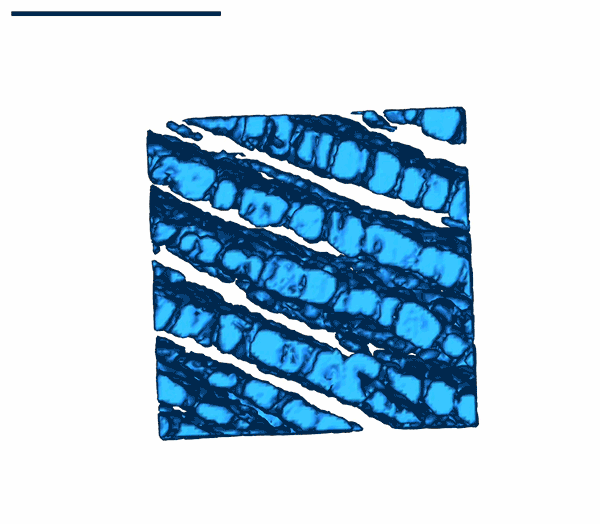Structural Complexity Gives This Fruit Its Metallic Blue Color
The super blue viburnum fruit gets its hue not just from blue pigment, but from the structure of its fat
/https://tf-cmsv2-smithsonianmag-media.s3.amazonaws.com/filer/5a/63/5a6367d6-27e2-4b2c-9a28-242d49a42199/2020_aug13_viburnum.jpg)
Sometimes, you can find a scientific mystery in your own backyard—that was the case for University of Bristol physicist Rox Middleton. She worked with a team of researchers to figure out why a common landscaping plant’s fruit has an intense, metallic blue, Veronique Greenwood reports for the New York Times.
The plant in question, Viburnum titus, can be found in yards throughout the United States and Europe. Each winter, it produces small, bright blue fruits. According to the paper published last week in Current Biology, the fruits’ color was previously attributed to a pigment inside, but the pigment is actually dark red.
Instead, the researchers showed that most of the fruits’ blue color isn’t caused by pigment at all, but by the precise structure of molecules on the outside of its cells. Structural coloration is rare in nature. It’s what makes peacock feathers teal and beetles iridescent. It’s even rarer in plants—Middleton previously studied the African pollia plant for its own structural blue color. And when the researchers looked at samples of viburnum fruit under a powerful microscope, they saw precise, repetitive structures.
“Once you see a repetitive structure, that exact size—yeah, it’s got to be [structural coloration]," Middleton tells the New York Times. When sunlight hits the fruit's pattern of repeating structures, only blue wavelengths reflect back to the viewer.

Something else made the fruit unusual even among its structurally-colored blue peers. Pollia arranges a common ingredient in its cell wall, cellulose, into precise stacks to achieve its shiny cerulean tone. Pollia has little nutritional value to birds, so it relies on its shiny packaging to catch their attention so that they spread its seeds.
Viburnum fruit is actually very nutritious for birds because it has a high fat content. And it uses some of its fat molecules, called lipids, to create its startling blue color. This discovery is the first time that scientists have seen a lipid molecules used to make structural color, as Charlotte Hartley writes for Science magazine.
The lipids that make up the color-giving structure aren’t perfectly aligned and smooth, but slightly globularm which makes the fruit’s color slightly cloudy, Middleton tells the New York Times. If the lipids had been laid out smoothly, the fruit’s color would be purer, more like beetles’ wings.
The dark red pigment inside of viburnum fruit also helps intensify the blue color because it helps capture more wavelengths of light than the structure alone, limiting what reflects back to the viewer.
Viburnum fruits may not be the only example of lipid-structure coloration in nature, though. University of Colorado, Boulder evolutionary biologist Miranda Sinnott-Armstrong tells the New York Times that they’ve found other species of fruit with similar, globular structures that haven’t yet been thoroughly investigated. She is planning to find out if they are also made of fat molecules and also lend the fruit their color.
Unlike pollia, the viburnum plant is being honest about its value to small birds foraging for a meal. It’s beneficial to viburnum plants to be straightforward because the more birds scarf down their fruit, the more their seeds will spread so that new viburnum plants will grow.
“Honest signals are rare in fruits as far as we know,” Sinnott-Armstrong tells Science Focus magazine. “If the structural color of Viburnum tinus fruits are, in fact, honest signals, it would be a really neat example where color and nutrition come at least in part from the same source: lipids embedded in the cell wall.”